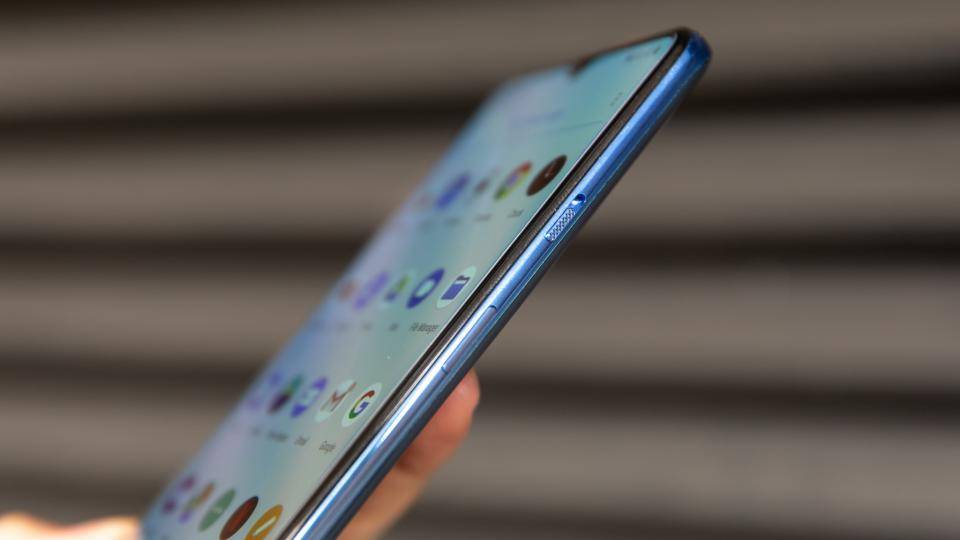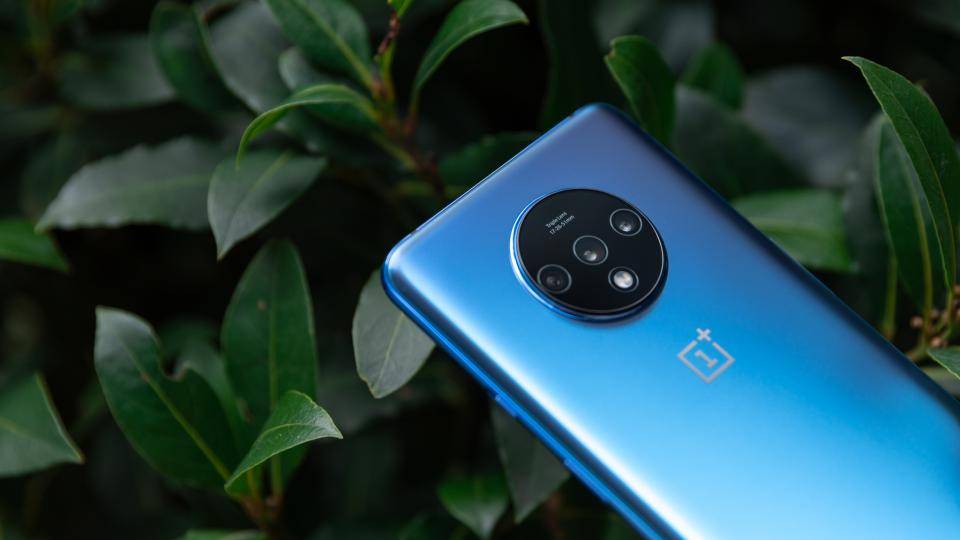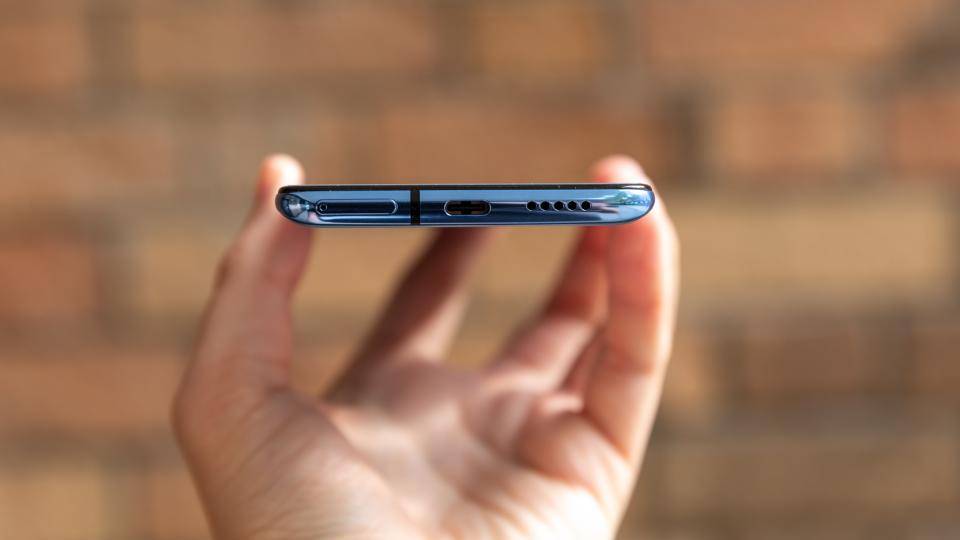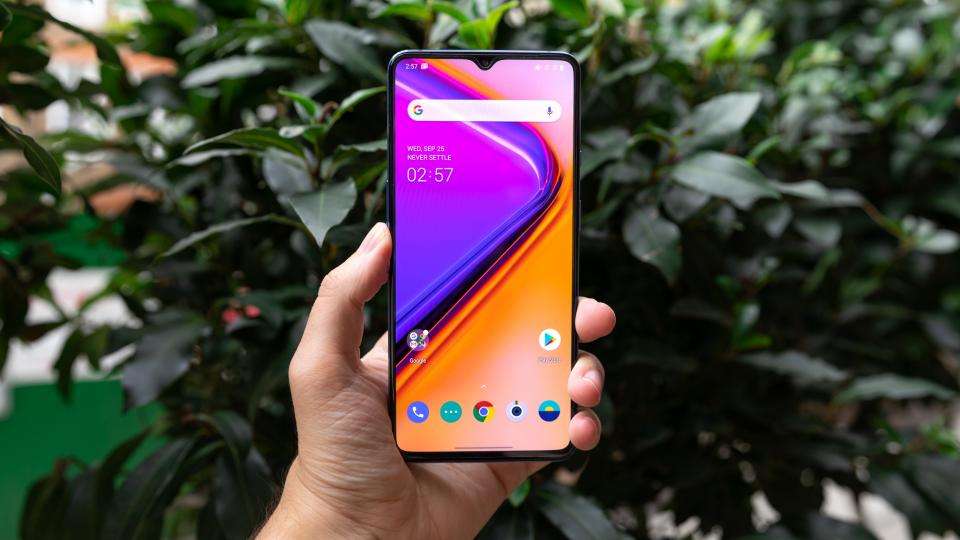OnePlus 7T OnePlus 7T review: Plenty of potential, fundamentally flawed
The OnePlus 7T is a sign of things to come from the Chinese smartphone manufacturer that everyone, it seems, loves to love. A sign that, from now on, the main OnePlus launch of the year will focus on the more expensive Pro model, while the cheaper phone the company is most famous for will have to wait until the T-series update for its big upgrade.
That’s not the official company line, of course, and OnePlus will deny it neglected its non-Pro phone earlier this year. The evidence, however, is there for all to see. Of the two new phones OnePlus announced in the first half of 2019, it made the most fuss about the OnePlus 7 Pro ; in the autumn of 2019 it's the OnePlus 7T that's up first, and it’s the one with the biggest and most exciting upgrades.
READ NEXT: OnePlus 7 review - Overshadowed but not outdone
OnePlus 7T review: What you need to know
A number of the new features gracing the OnePlus 7T have been brought over directly from the OnePlus 7 Pro, and the most notable of these is the 90Hz display. A feature normally reserved for gaming-focused phones, this lends things like web-page and menu scrolling more fluidity than on most other phones.
The OnePlus 7T also gains a third camera, a slightly larger 6.55in display, a significant redesign and there’s a new chipset under the bonnet – the Qualcomm Snapdragon 855 Plus.
All-in-all, it’s a pretty major overhaul and a much bigger improvement, on paper, than the one delivered by the OnePlus 7 earlier in 2019. The only thing we don't know yet is the price. That will be revealed on 10 October but I don't expect the price to change much if at all.
OnePlus 7T review: Design and new features
There are so many new things packed into the OnePlus 7T that it’s hard to know exactly where to start, so let’s begin with the most dramatic of all the changes – the way the phone looks.
You might not be able to spot any differences on the front. There’s a slightly bigger 6.55in, 20:9 screen and this is topped with a small, teardrop notch which houses the front-facing camera. Flip it over, however, and it’s all change. Instead of two camera lenses arranged vertically in the centre, there are now three mounted in a horizontal line across the centre of a large circular camera bump.
This isn’t the most attractive of arrangements. There’s a large amount of wasted black space around the lenses and the whole thing stands proud by well over a millimetre.

In truth, it’s a bit of a carbuncle, which is a shame because the matte glass finish on the rear and long, subtly curved edges feel great to touch, and the new colours look stunning. I was supplied with the Glacier Blue model for this review and its two-tone, smoky metallic finish is really eye-catching.
Otherwise, there’s not much to talk about. There’s a volume rocker on the left edge of the phone, the power button and do-not-disturb slider sit on the right, while the USB Type-C charging port, speaker grille and SIM card slot reside on the bottom edge.

As before, there’s a fingerprint reader set beneath the surface of the screen, which appears to work quite well. There’s no microSD expansion to add to the 128GB of internal storage, though and it’s also worth noting that there are no other storage options – the 128GB OnePlus 7T is the only model available.
OnePlus 7T review: Display
The big news on this edition of the OnePlus 7T isn’t the way it looks, but the way it feels to use. That’s because OnePlus has trickled down the 90Hz display tech from its pricier handset to this cheaper one. The result is that everything from website and menu scrolling to panning around in Google Maps feels ultra-slick.
It’s so smooth, in fact, that going back to using a regular smartphone with a 60Hz display (that’s most phones, in case you were wondering) feels a little odd. It’s like going back to watching standard definition TV after watching 4K, and it’s definitely an upgrade worth having.

The screen is also a little larger than the one on the OnePlus 7, measuring 6.55in across the diagonal, thanks to the microscopically small bezels. The resolution and panel technology remain the same, though: it’s still a 1080p AMOLED screen.
There are improvements elsewhere, with a boost to peak brightness and a reduction in the amount of blue light emitted by the screen. The former helps with playback of HDR material and this display does look great with Netflix HDR content. It still can’t match the best in the business, though; OnePlus could do with lifting shadow detail and making the most of the AMOLED panel’s perfect contrast.

As with previous OnePlus phones, you get the choice between several different colour profiles in the display settings: Natural, Vivid and Advanced. Natural seems to be calibrated to reproduce the sRGB colour space, which is the best mode for use while browsing the web, while vivid is closest to the DCI-P3 colour space used in HDR TV and movie content. Advanced allows you to choose from sRGB and DCI-P3 presets and tweak the white balance, but you’re best off just sticking with the main two modes.
In these modes, the OnePlus 7T’s display performs well and it’s pretty much spot on with the target colour gamuts. There are no particularly problematic areas for colour accuracy either and I found that the display reached peak brightness levels of 650cd/m2 in auto-brightness mode, meaning it should be readable in all but the brightest of ambient light.
OnePlus 7T review: Performance
Normally, OnePlus’ T-series phones stick with the same processor as their predecessors but not this time, with a Qualcomm Snapdragon 855 Plus running the show instead of the previous Snapdragon 855. The “Plus” here refers, not to an entirely new chipset, but to slightly boosted clock speeds across CPU and GPU cores. The high-performance Kryo 485 core, for instance, has been upped from 2.84GHz to 2.96GHz.
Predictably, this doesn’t result in huge benefits in overall performance but the OnePlus 7 wasn’t exactly a slow phone to begin with. Likewise, battery life is also barely different but that’s no bad thing. The OnePlus 7’s battery life was great and the OnePlus 7T’s is great, too, lasting an impressive 21hrs 13mins in our video rundown test. With moderate use, that means you should get at least a day and a half out of this phone, if not even longer than that.
OnePlus 7T review: Cameras
The OnePlus 7T’s other big upgrade, aside from the screen, is the camera setup, with the count rising from one to three this time around. These comprise a 48-megapixel (f/1.6) primary camera, supplemented by a 12-megapixel (f/2.2) 2x telephoto and a 16-megapixel (f/2.2) 0.6x ultra-wide-angle camera – a similar setup to other triple camera phones such as the Samsung Galaxy S10 and the iPhone 11 Pro.
The OnePlus 7T’s camera setup, however, has an extra trick up its sleeve: a super-macro mode that lets you capture subjects from as close as 2.5cm, which is the same as the more expensive Mate 30 Pro . If you can hold the phone steady enough, and your subject sits still long enough, you can get some quite stunning shots with this mode that look almost as if they’ve been captured with a microscope. Here’s a closeup of the edge of a one-pound coin, shot with the 2x telephoto lens in super-macro. It’s crazy how close you can get:
That’s an impressive addition but it isn’t the only one. OnePlus is also making use of the ultra-wide-angle camera to enable a new 'Super Stable' video mode. In this mode, the video recording uses the extra-wide field of view, cropping in severely and sacrificing pixels around the edges of the image in order to deliver Steadicam-like footage that barely moves when your hands or arms shake.
The stabilisation works very well and it’s uncanny how steady video looks. It’s almost as if you have the phone set up on a tripod. There are, however, big problems with optical image quality.
The main issue is that the ultra-wide-angle camera has a patch in the centre where it noticeably distorts the image. In stills, this takes the form of a small bulge in the centre which, if you're shooting subject matter with straight lines, will be immediately obvious. Shift into super-stable video mode and because the footage crops into the central area of the senor, the issue becomes even more obvious.
Move the camera slightly up and down or left and right, however, and the centre of the image takes on a weird hall-of-mirrors distortion that makes faces bulge and swell disconcertingly as you pan the camera around.
It turns out this is down to the camera software's Ultra Wide Lens Correction feature. Disable this and the centre of the image straightens out at the cost of severe optical distortion around the edges of the images. I marginally prefer wide-angle images without the correction enabled but neither situation is ideal.
How about the other two cameras? First off, although the primary camera can technically capture 48-megapixel images, it produces 12-megapixel images in default mode. If you want 48-megapixel photos, you have to switch into Pro mode and select 48MP JPEG. These are an improvement on the OnePlus 7’s full-resolution images but, if you look closely, pictures are still afflicted by plenty of weird artefacts.
In short, you’re better off sticking with the default 12-megapixel images, and these are mostly fine. In fact in low light, I was actually quite impressed. Here’s our low-light studio test scene in close up, compared with the Pixel 3XL:
The OnePlus 7T’s night mode has been improved, too, although it’s still not a patch on the Pixel 3XL and has issues with both focus and white balance:
There are bigger problems, however – when you move from the primary camera to the 2x telephoto the camera frequently goes mad and completely oversaturates the image. Even when it doesn’t completely go AWOL, the colours still aren’t quite right:
In short, the OnePlus 7T’s cameras aren't great. The ultra-wide-angle camera produces heavily distorted images, the Super Stable video mode exacerbates the problems, and the colour balance of images captured with the telephoto lens is often completely off-beam. Photographs from the main camera are fine but 48-megapixel shots are still not wonderful.
The only thing that works perfectly here is the video recording from the main and telephoto cameras. You can record in 4K at up to 60fps, the footage is both detail-packed and very stable, even without the Super Stable mode enabled, and the zoom is pretty smooth, too.
OnePlus 7T review: Verdict
Is good quality video recording enough to rescue the phone as a whole, though? Alas, I’d have to say no. Despite the fantastic 90Hz display, which is absolutely lovely, the excellent performance and the superb battery life, I’m afraid this is not a phone I can currently recommend.
The price might be reasonable and the design may be attractive but there’s simply no getting away from the fact that the cameras on the OnePlus 7T are a complete mess, with one of the lenses barely usable.
It is possible that the company has software updates in the pipeline to mitigate some of these problems and if that happens in the next few weeks I’ll update this review accordingly. For now, however, you're better off holding off on a preorder.
